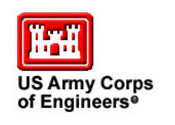
U.S. Army Corps of Engineers FONSI
Finding of No Significant Impact
Emergency Measures Associated with Maintenance of the CSSC Fish Dispersal Barriers – Environmental Assessment
Background
The Chicago Sanitary and Ship Canal fish dispersal barrier project was constructed to prevent the interbasin transfer of invasive aquatic species between the Mississippi River and the Great Lakes Basins. The Dispersal Barrier project has 3 primary components that are in varying stages of operation and construction. Barrier I, has been operating at a low voltage since April 2002 and will be upgraded and made permanent in the future. Barrier IIA is permanent and in operation since April 2009. Barrier IIB is in the design stage and will be under construction in the near future. The current electric dispersal barrier project needs to be maintained to properly function. Periodic shutdowns of the system are required in order to perform necessary maintenance tasks such as inspection, replacement of worn or broken parts, cleaning, etc. The recent detection of Asian carps, silver and bighead carp, in the Lockport pool has brought new needs to light. When the Asian carps were far removed from the barrier system, shut downs were easily accomplished with minimal concern of Asian carps dispersal through the system. Now that the Asian carps may be challenging the barrier system, caution and attention must be paid to prevent Asian carps from dispersing upstream of the barrier array. The upstream barrier, Barrier I can easily be turned on and off for maintenance since the downstream barrier in operation, Barrier IIA provides a barrier to dispersal of all sizes of fishes. However, when Barrier IIA is turned off for maintenance as currently scheduled, fishes can swim up to Barrier I. Because of the lower operating voltage of Barrier I it is questionable if Barrier I can repel juvenile Asian carps. Therefore to reduce the risk of Asian carps moving up stream of Barrier I fish should be eradicated from the downstream reach.
